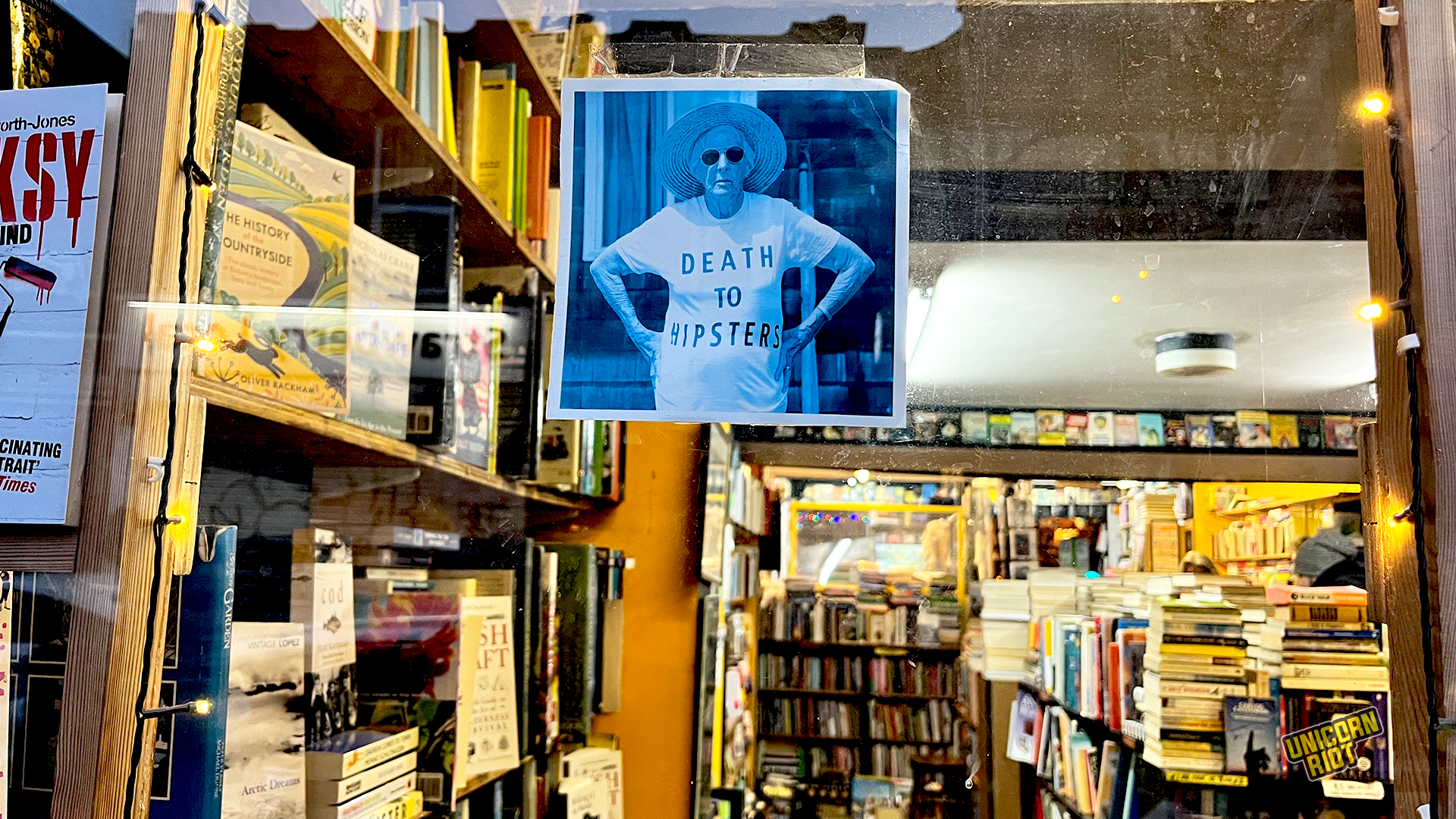The Tale of the City: Gentrification in London – Part 2
‘When they kick at your front door…’ – Gentrification in Brixton
‘The Guns of Brixton’ sung by the Clash in 1979 made Brixton synonymous with resistance, anti-oppression, and anti-racism beyond the borders of the United Kingdom. The song presaged the riots of 1981 which rose Brixton into a symbol even as they spread all over England* that summer. The emblematic city of Brixton is currently at a crucial crossroad, struggling not to lose its character as gentrification spreads across London.
With a vibrance of ethnic identities represented, Brixton’s main market on Pope’s Road in the heart of the city is where activists and campaigners have launched their wide-reaching #FightTheTower campaign. The anti-gentrification campaign is aimed at stopping the construction of Taylor Tower, a 20-story building that will alter the landscape of the market. Brixton will either keep its soul, or it will become an empty shell in a gentrified area. This article is the second in our three-part series, Tale of the City: Gentrification in London. [Update: July 26, 2023 – The proposed construction of what’s been called Hondo Tower, or Taylor Tower, has been withdrawn. Read more: ‘The Tower has fallen’ – A Win For Brixton’s Anti-Gentrification Movement.]
This article is a commentary piece reflecting lived experience, research and/or perspectives of the author. The views and opinions expressed don’t necessarily represent those of Unicorn Riot.
In the 1980s, Brixton symbolized the heavily policed racially discriminated communities’ answer to the exclusion, austerity, and repression of the UK’s former Prime Minister Margaret Thatcher’s regime. ‘Thatcherism’ was the main pillar along with Reaganomics in the neoliberal narrative in the 80s.
Neoliberalism is a political, economical and philosophical current achieved mainly through austerity and privatization. Its aim is the deterioration of the welfare state and government’s social and financial intervention in order to achieve economic prosperity and well-being through the reign of the free market competition in the modern capitalist societies.
Neoliberalism targets not only the social state but society itself. It was presented to the UK as the only alternative by Thatcher who phrased it as “there is no alternative” (TINA). It was complemented by former U.S. President Ronald Reagan’s economic policies called Reaganomics, which implemented tax reduction, decreased government spending and deregulation of the markets. Thatcher’s other well known phrase in the early 80s, “there is no society but families and individuals” is indicative of neoliberalism’s effort to suppress and deconstruct society’s ability to self institute, decide and act.
Drowning in Neoliberal Waters
Forty years later, Brixton is floating in deep neoliberal waters, facing the biggest danger ever as a community – repeated waves of gentrification. A continuous phenomenon with the peak of the iceberg being the construction of Taylor Tower, in the heart of its famous street market, which threatens to change the character and soul of Brixton once and for all. As it is wisely depicted in the Reclaim Brixton leaflet, “You survive the riots and it’s not the fire that kills you, it’s the developers”.
Brixton is in the borough of Lambeth, South London and became the home for the first wave of immigrants from Jamaica that came to England after World War II, forming a strong Afro-Caribbean community and contributing to the modern shape of the borough’s population. A population consisting 55% of whites and 45% of minorities, with a 24% Black population. This Afro-Caribbean aura, together with the cultural pluralism of such a diverse area, composed a unique authentic essence that was not to be met anywhere else in London. This offered Brixton greatness and at the same time it was the reason that the state had a racist approach and forced severe austerity politics in the area.
After the ‘81 riots, Thatcherism tried to deal with the thorn that scratched its hegemony by applying plans of regeneration in the area. Thus making it one of the first examples of the punitive course of gentrification against a politically organized community. The approach that was adopted was ‘imported’ by the United States under the name of ‘Spatial Deconcentration’ and is described consistently in “the real Brixton challenge” article:
“In the wake of massive urban riots and political unrest in the US cities in the late 60s, the Federal government developed a scheme for breaking up the large communities of blacks and other troublesome minorities, and relocating them, in suburbs, further from the centers of power and influence, and broken up into smaller, more isolated groups which could less easily organize and rebel. On the one hand government subsidies encouraged the inner city poor to move out; on the other they let inner cities decline, pushed local authorities into shutting down cheap housing etc, then allowed development by property companies to rebuild inner city districts for the middle classes… Differences in housing patterns in London, though, mean that rather than being forced from one ghetto to another, middle class and working class, poor and well-heeled, live cheek by jowl. This has in fact been characteristic of the city for centuries, and tends to ebb and flow.“
The most intense political element of the area at that time was squatting and it occurred in many places with an emphasis in the Elephant and Castle neighborhood profiled in part one of this series.
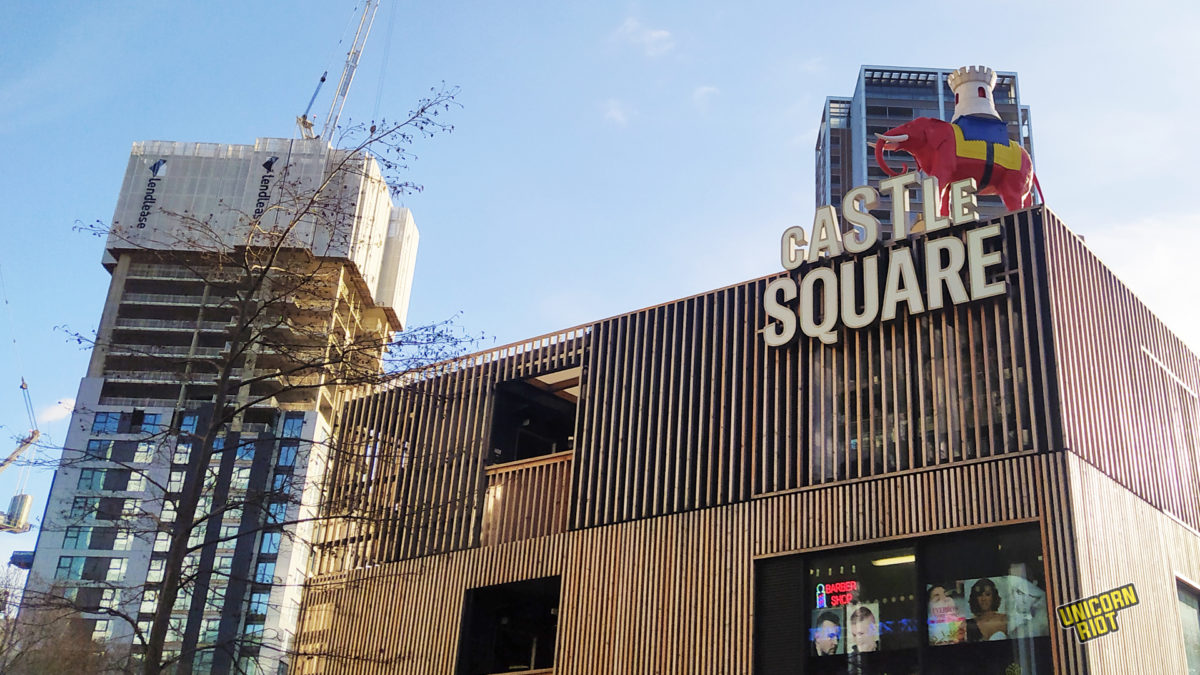
‘Squat the World!’ The Squatting Movement in Brixton
Enhanced by the counterculture, the squatting movement politicized and radicalized Brixton, leading to strong housing struggles, alternative economic proposals and confrontational projects. Appearing in the area since 1969, squatting reached historic heights by the late ‘80s with more than 1,000 squats and a squatting population that Brixton squatter’s mag Crowbar claimed to exceed 6000 people!
Squatting and its growing popularity was so worrying for authority and the council of Lambeth, that towards the late ‘80s they tried to turn housing associations or large housing co-ops against the squatters by claiming squatted houses in favor of the former. The squatting movement has also been one of the pinpoints of the English radical tradition, acting both as an answer to homelessness and as a liberated public space. The unhoused population in austere dark social periods reached unprecedented peaks and was a bleeding social trauma in many English cities.
The public character of squatting on the other hand created space for art, culture, and activism to blossom and define communities, as it happened in Brixton. English authorities, including the Lambeth Council, attacked the squatting scene persistently with evictions, legal acts, and legislations.
The authorities’ tactics involved slandering campaigns as well as attempts to manipulate social housing against the squats. Finally, in 2012, ‘Weatherlay’s law’ turned squatting in residential buildings into a criminal offense subject to arrest, fine and imprisonment. That was a defining moment for the squatters as it reduced their dynamic and numbers and forced them to invent other tactics used today, like short-term, two or three months squats, and then relocation to another squat.
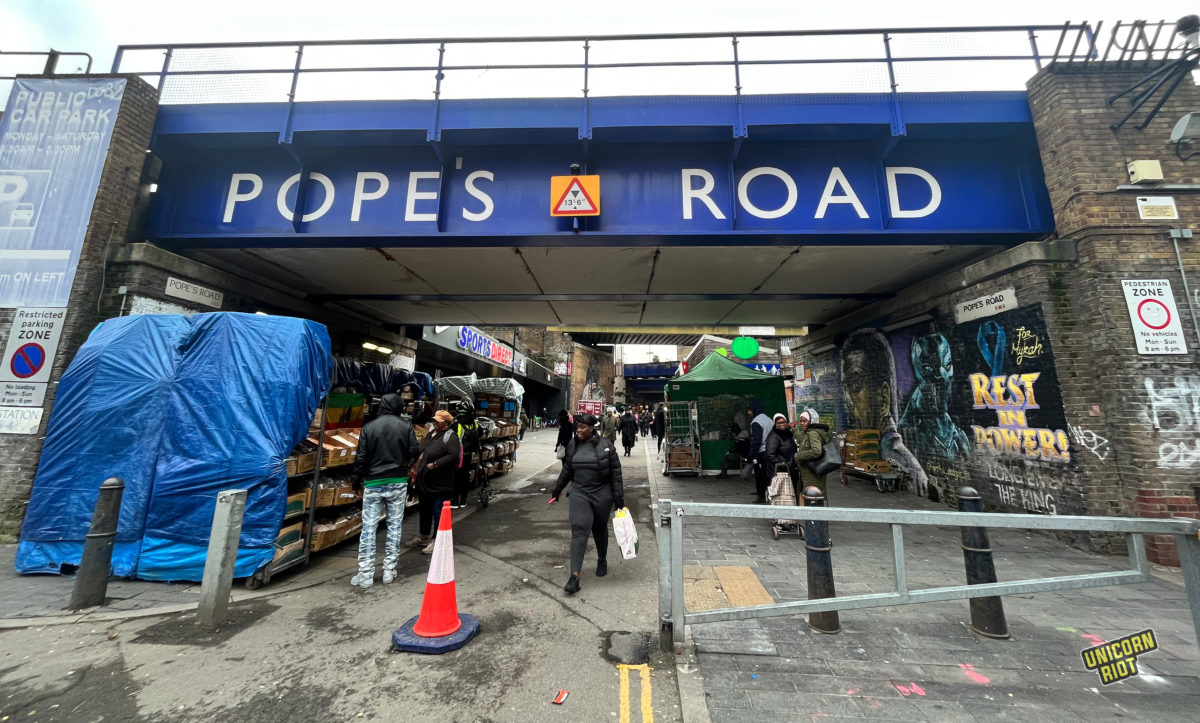
Thirty-Year-Timeline of Brixton Gentrification Struggles
Dense political moments of this context have been made public through the wonderful and useful digital timeline called ‘Brixton Gentrification Struggles 1993-2021 A Timeline’. It was created by Jordi and Marion, two devoted grassroots activists who participated in the Reclaim The Streets movement and London Indymedia and had a persistent social and political presence in Brixton the last 40 years.
The fact that the Timeline was made during the pandemic puts an emphasis on how socially aware, free minded people can act creatively and positively during a static dystopian period. The timeline depicts decisive and emblematic moments in Brixton’s anti-gentrification history with 1993 as a starting point, chosen for when the ‘Brixton Challenge’ plan was put into action. The Timeline revealed that profit was the focus:
“Brixton Challenge marks the beginning of a council-led transformation that turned Brixton into what was advertised as a visitor destination with a vibrant night-time economy … regeneration focused on new retail and commerce with some art thrown in, but neglected existing traders and residents. Brixton’s mixed heritage was re-invented through the lens of consumerism.”
The effort of Lambeth Council and its real estate and business-driven allies to mutate the face and soul of Brixton is charted through the timeline. References include pivotal moments, such as the eviction in 1995 and the demolition in 2007 of Cooltan squat. Cooltan was a cooperative squat offering cultural artistic and social programming and space. It was also the epicenter of the fight against the Criminal Justice and Public Order Act in 1994. This Act broadly deteriorated civil liberties by penalizing “unlicensed” raves and free parties all over London and attempted to control the public space while pushing privatization and consumerism.
The next year, those policies ‘absorbed’ the pub Atlantic, a very important space especially for the Afro-Caribbean population. It was an unofficial community center so pivotal that it was also named Jamaican embassy and it was furthermore connected to the Reggae/Dub sound system culture. It’s not at all irrelevant that in the other big riots that lit the streets of Brixton in 1995, the Dogstar which was the name that the new owners had given to former Atlantic, was one of the main targets and was burned down.
In 1999, the legendary 121 Center squat, well-known beyond borders mainly through the punk scene, which had been alive and kicking for 26 years acting as an anarchist social center, was evicted.
Ten years later, in 2009, when the banking and financial crisis started to reshape the pace and quality of regeneration all over London, the Future Brixton Masterplan was imposed. Heavy gentrification appeared in the area after the master plan was enacted.
This led to many campaigns which provided serious effective ways and valuable experience to the struggle, mostly through grassroots initiatives and resilient activists of the area. Even if most of the campaigns had a negative outcome, the small victories, the strategies and tactics and the degree of militancy of each one synthesized an anti-gentrification arsenal that everyone should be aware of if related to such struggles.
Another important movement was the Guinness Trust Campaign, the fight against the landlords and the demolition of the Guinness Trust Estate. Also noteworthy is the Clifton Mansions squatter’s eviction, which after the council’s decision was followed by Camelot being placed in the empty buildings. Camelot is a private company which provides ‘live-in guardians’ until an empty place can be sold and refurbished so that the possibility of a re-squatting attempt is eliminated. This method became popular all over London in places which bear a squatting tint.
Save Cressingham Gardens or HASL campaign which are both described in detail in the Timeline were launched after 2010, a period during which gentrification attacked with its darker and wilder face. This gentrifying intensity became very obvious in 2015 with the Save Brixton Arches campaign. The campaign was prompted by the council’s plan to refurbish the railway arches in Atlantic Road and displace the traders that were part of Brixton’s unique culture for decades.
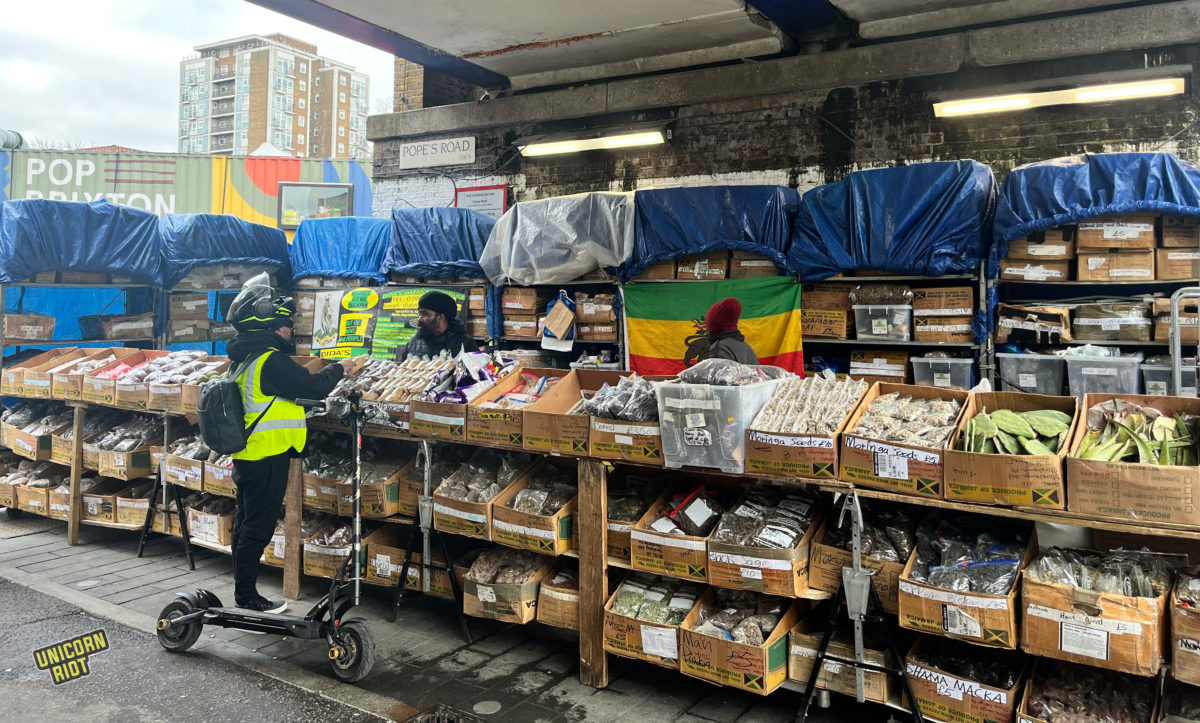
White-Oriented Leisure Zones
The sociopolitical trend in the council at that time is better felt by one of the reasons that forced Grosvenor Pub to close. Grosvenor, a techno temple and Brixton favorite, became a memory among others because of the complaints by new tenants of expensive apartments that were built nearby. They complained of noise, the subcultures, and all-night parties. It was clear that the plan was to transfigure the notorious Brixton to a white-orientated entertainment leisure zone.
This unfortunately is very visible today considering that the whole area with a Black and Afro Caribbean community throbbing with life during the day, totally changes character at night.
It has transformed into a sterilized entertainment complex, where white hipsters are unleashed in the evenings to live their myth in Brixton, to an extent that Black locals cannot enter the clubs unless they are accompanied!
Brixton First
In such a political frame, the Save the Arches Campaign lasted three years and the last traders were removed in April of 2018 having created beautiful actions and protests.
Actions included a collaboration with the street artists PINS who orchestrated the painting of the shops shutters, as well as the composition of the music single ‘Brixton First’ by Potent Whisper — the video, seen below was filmed during the Reclaim Brixton! protest that took the form of a militant street party.
During 2018, the Brixtonian fight against gentrification jumped to its most critical phase. Hondo Enterprises, owned by a Texan billionaire DJ called Taylor McWilliams, bought Brixton Village and Market Row. The latter refers to the Brixton Market, the heart of the Brixtonian community which used to pulse in dreamy authentic colors and the seductive tunes from the sound systems.
The next year, the iconic rave Club 414 was forced to closed, leaving a dark cloud over the old Brixton. Urban 75, an internet forum, showcased some of the friction between newcomers and existing residents:
“Tonight I learnt that some fucking shithead young professional couple who have moved into the new Lexadon flats on Coldharbour Lane have started repeatedly complaining to the council about the noise from the 414. If you don’t like the noise from a much-loved club that has been around from before when you were born, don’t move into the fucking area, you self-entitled, selfish, arrogant pieces of shit.”
On Saturday, May 24, 2019, the Club 414 threw its final party – ‘Brixton Acid City – Celebrating The End Of An Era’.
The evangelists of the new era, however, forgot that the people of Brixton have lived authentically and kept it real through extremely harsh conditions for many decades now. They possess a hard-gained fighting experience that led to the beginning of a new battle that emerged amid the Coronavirus Pandemic in 2020, the Save Nour campaign.
The Save Nour campaign was started to protest the eviction by McWilliams’ Hondo Enterprises of Nour Cash and Carry, a family-owned shop in the market. Held mostly online due to COVID, the campaign had a positive result and was a first victory against Hondo’s methods.
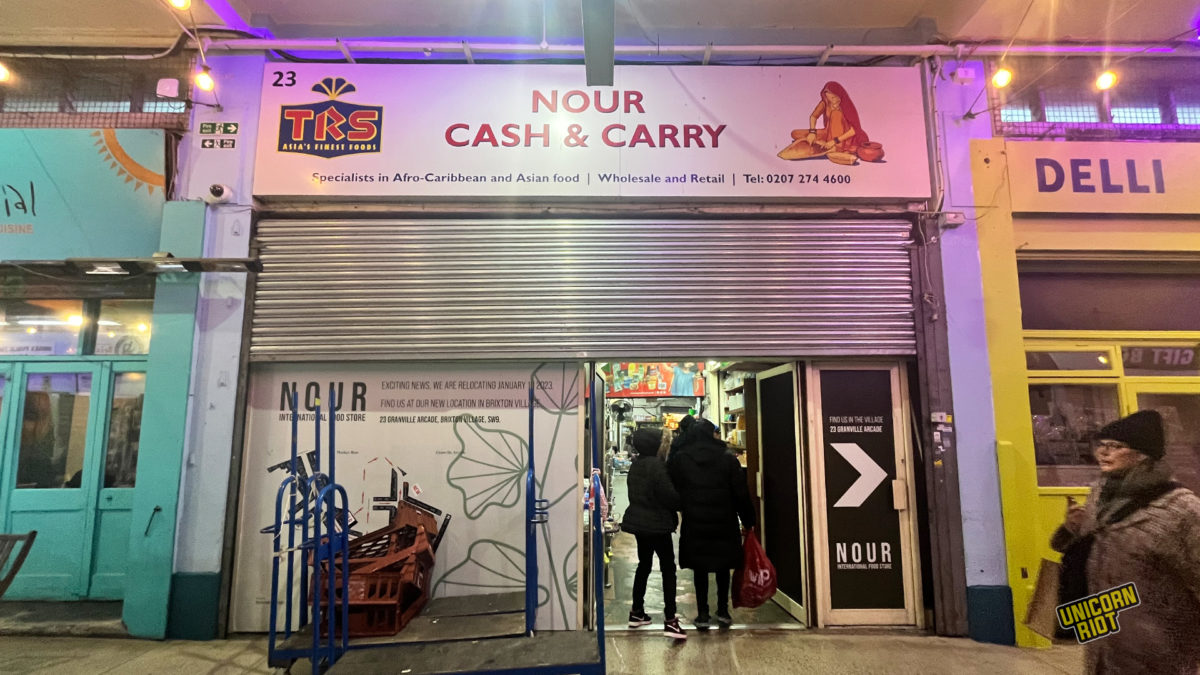
The website of the campaign became the platform that was later used to launch the #FightTheTower campaign, maybe the most determinant anti-gentrification struggle that the local population has been involved in until now.
The #FightTheTower campaign was launched after McWilliams announced through his company a plan for the construction of a 20-story office block in the center of Brixton market called the Hondo Tower or Taylor Tower. The Tower was initially publicly announced with a promotional exhibition in the market in 2019. Lambeth Council received Hondo’s official planning application in April 2020 during the first period of COVID pandemic. The Council stated that the benefits of the Tower were “sufficient to outweigh the identified impacts on heritage and residential amenity.”
However, campaigners allege that the developers are attempting to evict the area’s multi-ethnic residents favoring a more white demographic. The Tower’s commercial concept is visualized through retail and office spaces at day and mainly a boosted, consuming-based nightlife which will likely mutate the area completely.
Taylor McWilliams, known as a mediocre DJ, is strongly hooked to the art world and mainstream parties. Artists, as a more loose affiliate group with a progressive sign, have often untied the hands of developers to penetrate communities which consistently managed to keep their unique identity until then. Consciously or not, this wave of ‘developers’ have provided shelter to ruthless gentrifiers in the name of innovation as proven by the case of Brixton.
McWilliams, who threatens to bury Brixton’s historic community in a tower, feels untouched like his other actions don’t have repercussions in the artistic world. This is depicted in his successful parties in Ibiza, Spain which reveal an acceptance by the artists instead of a seclusion which would reflect the dishonor that many Brixton residents feel he is worth. It seems that in the contemporary world of art, politics and political correctness sell in a spectacular and non-contextual way.
For energetic, political and social minded people, the context saturates the meaning, creating floods of thought and action. The mobilizations and protests may have been difficult to organize in the pandemic, however even during the lockdowns, the campaign pushed forward following legal steps, applying formal objections, raising awareness digitally and physically when possible and gaining support from a wide part of the artistic scene.
The #FightTheTower campaign has managed to freeze the tower construction through events, rallies and direct actions after the lockdowns. The struggle has entered a critical moment, awaiting for the results of a petition that has been handed to the mayor of London against the construction of a building that many claim will symbolize and materialize the destruction of the community. This fight is crucial and it’s now, so I close with the right thing and rephrase an old song of Public Enemy: ‘Fight the Tower, we gotta fight the Towers that be.’
Cover image: Sign reading contributed by Daphne. “Death to Hipsters” in the window of Bookmongers secondhand bookshop, a Brixton institution which has been a constant on Coldharbour Lane since 1992.
*The United Kingdom is an independent country encompassing four other countries – three of which are on the island of Great Britain, Scotland, Wales, and England, along with a region called Northern Ireland.
Tale of the City: Gentrification in London – Part 1 – Elephant and Castle: The Ground Zero of Gentrification in London
Follow us on X (aka Twitter), Facebook, YouTube, Vimeo, Instagram, Mastodon, Threads, BlueSky and Patreon.

